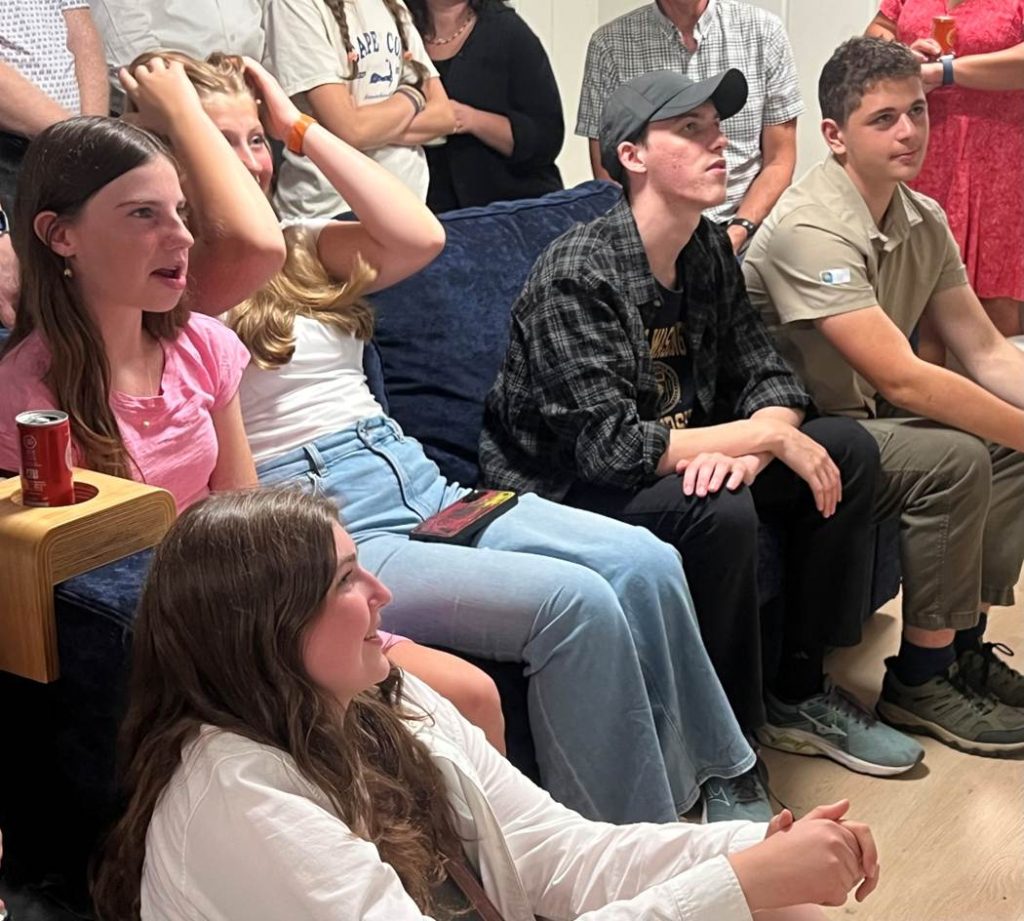SILVER SPRING, Maryland — It’s up!
SilverSat’s cubesat launched into space Sunday evening from Cape Canaveral, Florida aboard Northrop Grumman’s Cygnus XL spacecraft. It is now on its way to the International Space Station, where it’s scheduled to be released into orbit in November to begin its mission to tweet pictures to order from space.

“I’m so happy that we’ve gotten this far and been able to send something into space,” said Aubrey Forsgren, a high school sophomore who is one of the team members.
Persistence has paid off for SilverSat’s team of student engineers, who started out as a small group of middle and high schoolers in 2017. Many of them, their parents and advisers were on hand at two watch parties in Silver Spring, Maryland and Cape Canaveral to witness the launch of the SpaceX Falcon 9 rocket. Some of the original students have now graduated from college in the eight years since they started the project; some watched from college dormitories while new generations have steadily signed on.

The students have packed the 10 x 10 x 10 cm (about 4 x 4 x 4 inch) satellite with a camera, a radio transceiver, a computer, solar panels, electronics, antenna, guidance systems and other equipment needed for its mission to tweet from orbit.
They have tested and re-tested the satellite to make sure it works and can withstand the rigors of space. They have learned how to operate a radio transceiver, earned amateur radio licenses and demonstrated their expertise to NASA’s strict standards. They persevered through a pandemic, eight high school graduations and federal government red tape.
“The goal of SilverSat has always been to provide area kids with an opportunity to learn something outside what they learn inside a classroom,” said Leticia Barr, former Montgomery County Public Schools teacher and founding board member of SilverSat. “We’re thrilled that building a cube satellite and sending it into space has provided hands-on project-based learning for over 60 students through the years.”
The project was accepted into NASA’s CubeSat Launch Initiative in 2021, says Dave Copeland, a Silver Spring engineer who started the SilverSat group. He never thought it would take so long when he started. “I thought it would launch by 2019,” Copeland said.
But Sunday’s launch went off without a hitch.
“So proud of these student engineers and can’t wait to see the satellite’s first picture,” said Jane Meier, whose son Noah, an eighth grader, is one of the team members.
Anyone can visit SilverSat’s website at Silversat.org/operations to request a photo. If it’s feasible, when the little satellite is orbiting over the right spot in the Northern Hemisphere, it can take a picture of that spot and then send it out over X (formerly Twitter) from its account @silversatorg for anyone to see.
“I’m so immensely proud of this group. They are now members of the spacefaring community,” said Copeland.
Astronauts aboard the International Space Station used its robotic arm to capture the Cygnus spacecraft and its cargo, including the SilverSat cubesat, on Thursday.
“All this work I’ve been doing for five years. It’s a satellite. It’s in space. It’s kind of crazy,” said 11th-grader Nicholas Niski.
The space station will use Canada’s robotic arm to capture the Cygnus XL spacecraft carrying SilverSat and 11,000 pounds of cargo at 6:35 a.m. on Wednesday, Sept. 17. NASA astronaut Jonny Kim will operate the Canadarm2 with assistance from NASA astronaut Zena Cardman.
Visit the SilverSat website at https://silversat.org/
SilverSat is on Bluesky, Facebook, and Instagram.
For more information, interviews or photos contact:
- Leticia Barr Leticia@silversat.org
- David Copeland Dave@silversat.org